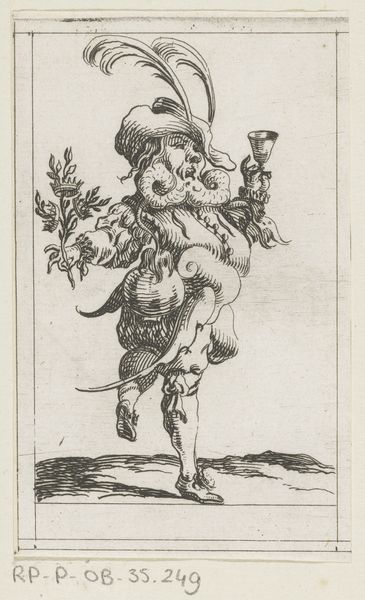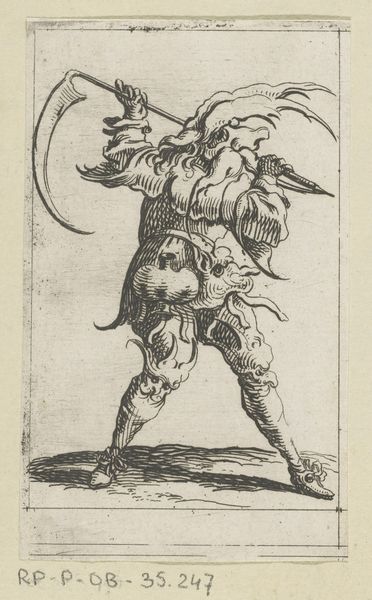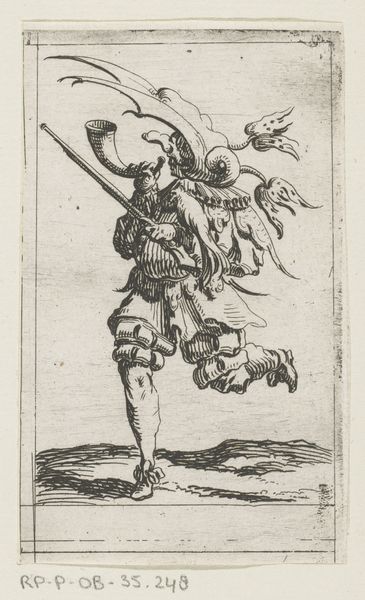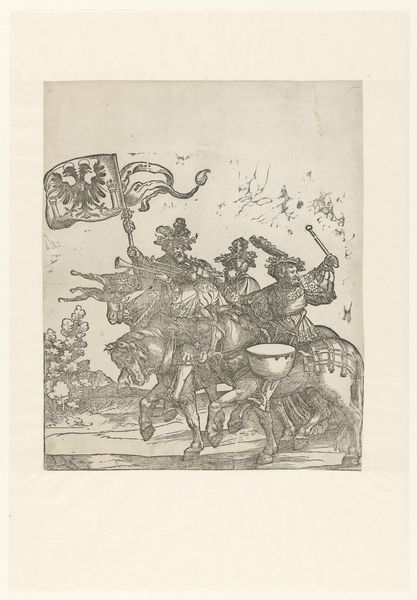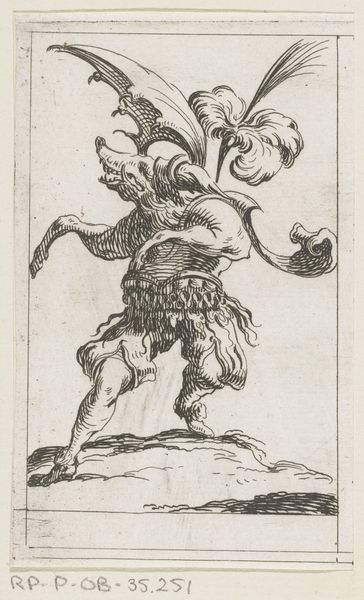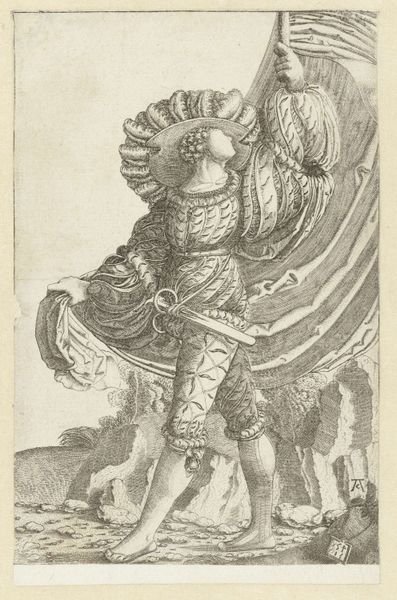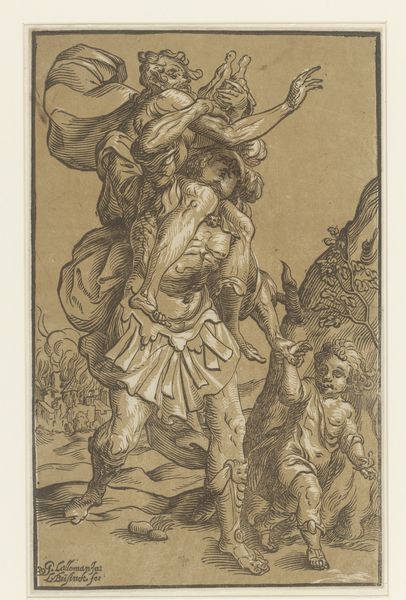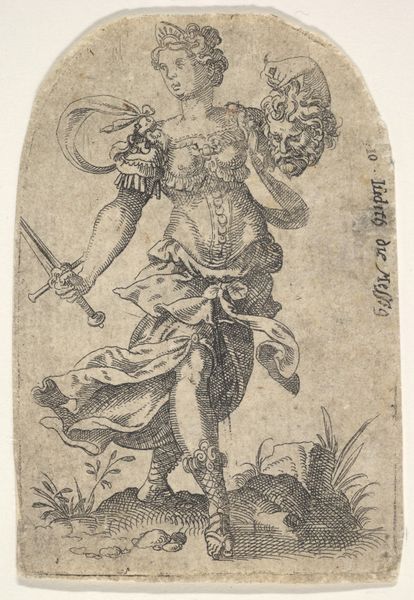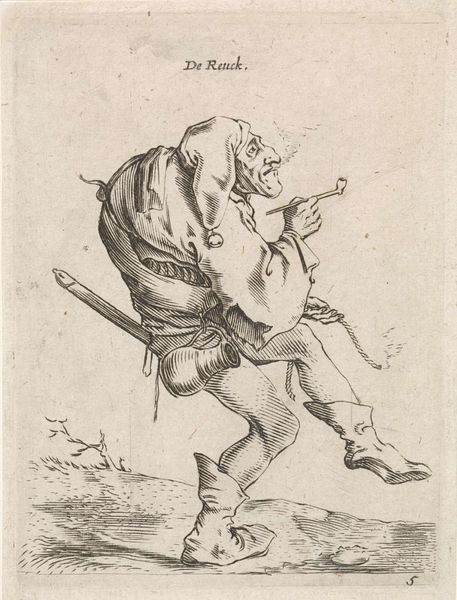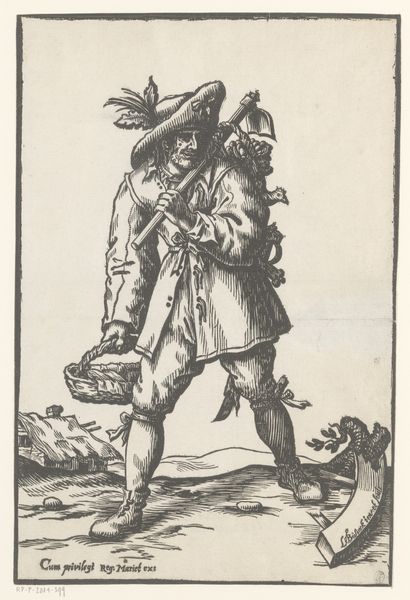
print, etching, engraving
#
comic strip sketch
#
quirky sketch
#
baroque
# print
#
pen sketch
#
etching
#
caricature
#
figuration
#
personal sketchbook
#
sketchwork
#
pen-ink sketch
#
line
#
pen work
#
sketchbook drawing
#
history-painting
#
storyboard and sketchbook work
#
sketchbook art
#
engraving
Dimensions: height 110 mm, width 65 mm
Copyright: Rijks Museum: Open Domain
Editor: Here we have "Mei," an etching by Denis Boutemie, created sometime between 1633 and 1643. It's a pretty small print of a figure, maybe a caricature, loaded down with flowers. There’s a slightly absurd quality to it, but I'm not sure why. What strikes you about this piece? Curator: The etching technique is key here. Consider the material process: the artist meticulously incising lines into a metal plate, the labor involved, the acid bath, the printing process itself. This wasn't about some "divine inspiration," but a craft, a *production.* Look closely at how the lines create texture and form. Where did Boutemie learn these skills? What was his access to materials? Was this commercial work? What does its creation say about workshop practices and the economics of art production at the time? Editor: That’s a different way of thinking about it. So, instead of focusing on the figure itself, you are more interested in… the *how* of its creation? Curator: Exactly! The "how" reveals so much about the social context. Also, consider the availability of prints like these to different social classes. How would different audiences consume this image? Was this mass-produced? Did it serve a specific function? Its material existence directly shapes its meaning. And to consider the value assigned to printmaking at the time... was this "low art" because it was reproducible? How did such judgments shape the labor and artistic expression involved? Editor: So, the etching itself, its mass-producibility perhaps, affected how it was valued… interesting. Thanks for expanding my understanding! Curator: Absolutely. Looking beyond the surface to the means of production, the material conditions, can open up entirely new perspectives on even the smallest of artworks. It moves art history away from a focus solely on "genius" and more towards the lived reality of the art's creation.
Comments
No comments
Be the first to comment and join the conversation on the ultimate creative platform.
